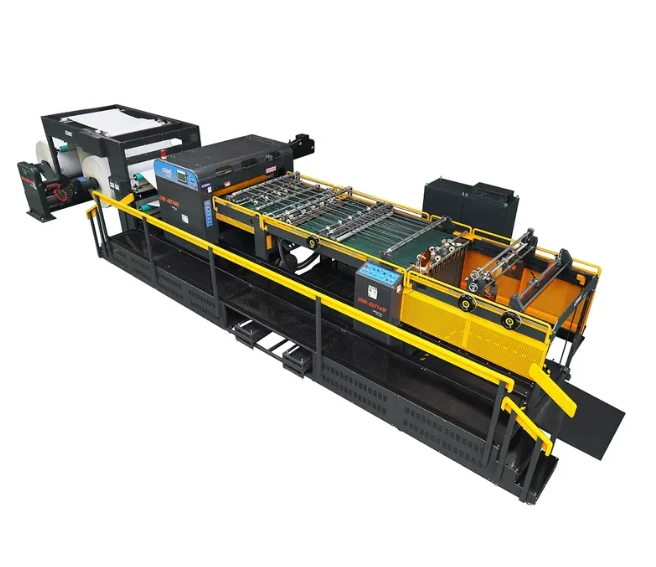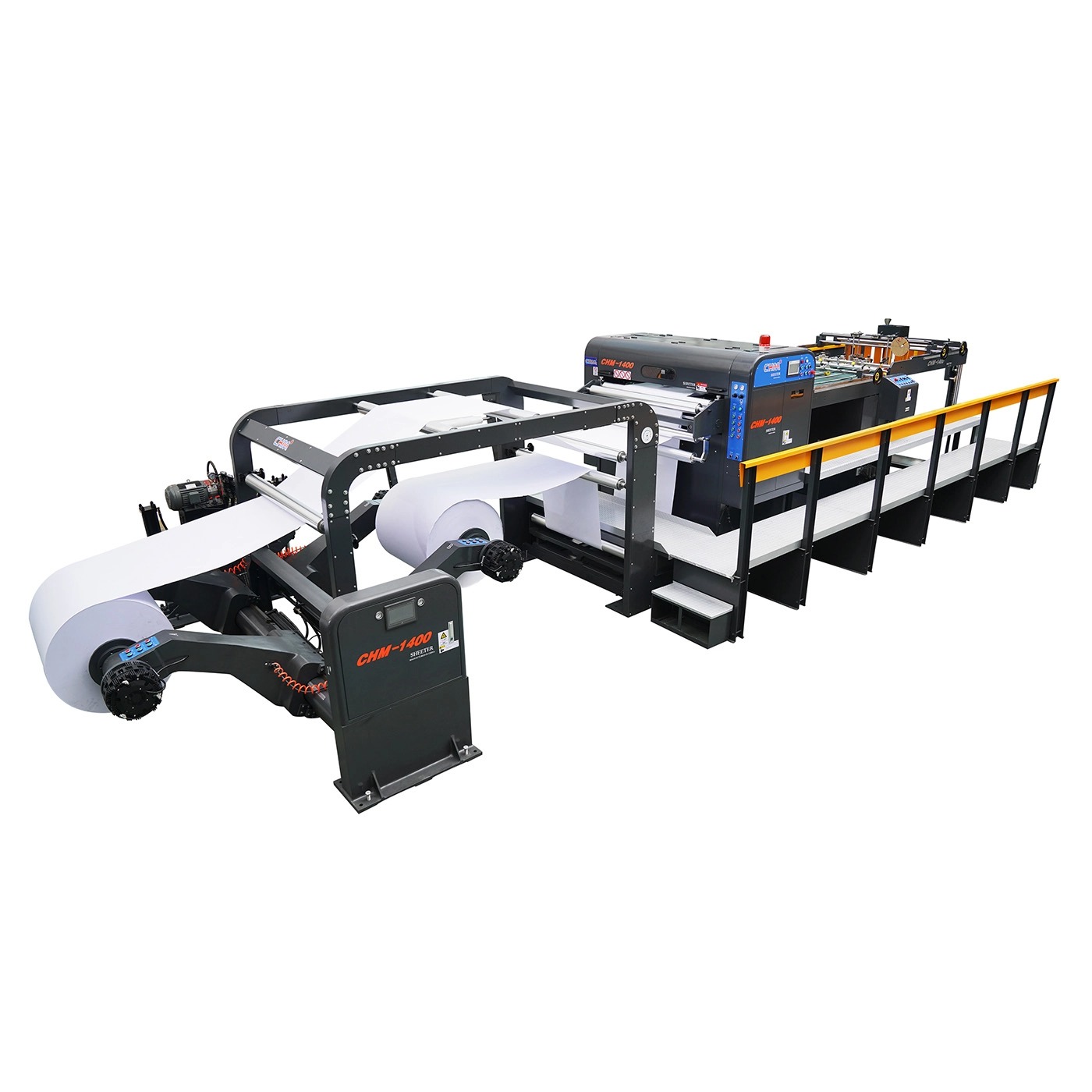 English
English- All
- Product Name
- Product Keyword
- Product Model
- Product Summary
- Product Description
- Multi Field Search
 English
English

Views: 180 Author: Site Editor Publish Time: 2025-08-22 Origin: Site











A Paper Sheeting Machine is a vital piece of industrial equipment designed to cut large rolls of paper or board into precise sheet sizes. It is widely used in printing houses, packaging facilities, and specialty paper processing plants. The performance of such machines is often measured not just by speed or accuracy, but also by their ability to handle different paper types and thicknesses. For businesses working with varied materials — from ultra-thin tissue to thick cardboard — knowing the maximum thickness the sheeter can manage is essential. The answer to this question depends on multiple factors, including machine design, blade configuration, cutting pressure, and feed system engineering.
The maximum thickness a Paper Sheeting Machine can handle is influenced by both mechanical and operational parameters. The cutting system — usually rotary or guillotine type — must be engineered to generate enough force to slice through the desired material without compromising cut quality. The feed rollers, for example, must maintain precise alignment to prevent shifting during the cutting process. Similarly, the drive system must provide stable motion control for consistent results. In many commercial-grade sheeters, the maximum thickness can range from 0.05 mm for thin papers up to several millimeters for heavy board. However, exceeding these limits can lead to machine wear, blade dulling, and uneven cuts.
| Material Type | Typical Thickness Range | Machine Handling Capability |
|---|---|---|
| Tissue Paper | 0.02 – 0.08 mm | Easily handled |
| Standard Copy Paper | 0.07 – 0.12 mm | Easily handled |
| Coated Paper | 0.10 – 0.20 mm | Requires stable feed control |
| Light Cardstock | 0.25 – 0.50 mm | High-precision cutting needed |
| Heavy Cardboard | 0.80 – 2.50 mm | Requires industrial-grade sheeter |
This table offers a general guideline, but actual maximum capacity should always be confirmed by the machine’s technical specifications.

When using a Paper Sheeting Machine, thickness is not just about whether the blade can pass through the material; it’s also about maintaining edge quality, sheet uniformity, and operational efficiency. Cutting material that is too thick can cause excessive strain on the mechanical components, leading to increased maintenance needs. On the other hand, operating below the recommended minimum thickness may cause slippage in the feed system. Therefore, understanding the optimum range for your sheeter not only extends its lifespan but also ensures consistent output quality. For businesses that handle mixed orders — such as alternating between thin offset paper and thick packaging board — adjustable settings and blade options are key features.
A high-precision commercial paper sheeting machine integrates several design elements that influence its thickness handling capabilities:
Blade Design and Sharpness: Hardened steel or tungsten carbide blades maintain edge integrity when cutting thick stock.
Cutting Mechanism Type: Rotary sheeters offer continuous cutting and can handle higher speeds, while guillotine systems can exert more direct force for thick materials.
Feed System Pressure Control: Adjustable nip rollers ensure stable feeding without crushing the paper surface.
Motor Power and Drive Control: Strong drive systems maintain torque even under heavy cutting loads.
Sheet Registration Systems: Optical sensors and mechanical guides maintain sheet accuracy regardless of thickness variations.
These combined features help ensure that even when operating at the higher end of the machine’s thickness range, the output remains consistent.
When pushing a Paper Sheeting Machine to its maximum thickness capacity, operators must consider both safety and performance. Thicker materials require more cutting force, which increases the risk of blade wear and potential operational hazards if maintenance is neglected. For example, a blade under high stress can overheat, leading to deformation or reduced cutting precision. Therefore, scheduled blade inspections, lubrication, and feed alignment checks are crucial. Additionally, using the wrong speed settings for thick material can cause sheet skewing, incomplete cuts, or jamming. To avoid these issues, manufacturers often provide recommended settings for different thicknesses — and it’s essential for operators to follow them closely.
Determining the actual maximum thickness your Paper Sheeting Machine can handle involves three steps:
Check the Manufacturer’s Specification Sheet: This will list the official maximum and minimum thickness ranges.
Run Test Cuts: Testing with different materials allows you to see real-world performance and adjust settings accordingly.
Monitor Output Quality: Even if the machine can technically cut thicker materials, check for edge burrs, uneven lengths, or sheet curling, which may indicate that you’re exceeding the optimal range.
By following these steps, you can confidently match your production needs to the machine’s capabilities.

1. Can a paper sheeting machine cut both thin and thick materials?
Yes. Most high-quality sheeters are designed to handle a wide range of thicknesses, from delicate tissue paper to rigid cardboard, as long as the material falls within the machine’s specifications.
2. What happens if I exceed the maximum thickness limit?
Exceeding the recommended limit can cause poor cut quality, damage to the blades, excessive wear on mechanical components, and even safety hazards.
3. Does the type of blade affect thickness capacity?
Absolutely. Heavier, high-strength blades can handle thicker materials more effectively without dulling quickly.
4. Can machine settings help when working near the maximum thickness?
Yes. Adjusting feed speed, blade angle, and roller pressure can improve performance and reduce strain when cutting thick materials.
5. How often should blades be replaced when cutting thick materials?
Blade replacement frequency depends on usage volume, but cutting thicker materials generally accelerates wear, so inspections should be more frequent.
The maximum thickness a Paper Sheeting Machine can handle is not a one-size-fits-all number — it depends on machine engineering, blade design, and operational practices. While many commercial models can cut materials from very thin sheets to several millimeters thick, pushing to the upper limit should be done with caution and proper settings. Understanding these factors not only ensures better product quality but also extends the machine’s operational life. For companies aiming to process a wide variety of materials efficiently, selecting a machine with flexible thickness capacity and robust engineering is a smart investment.